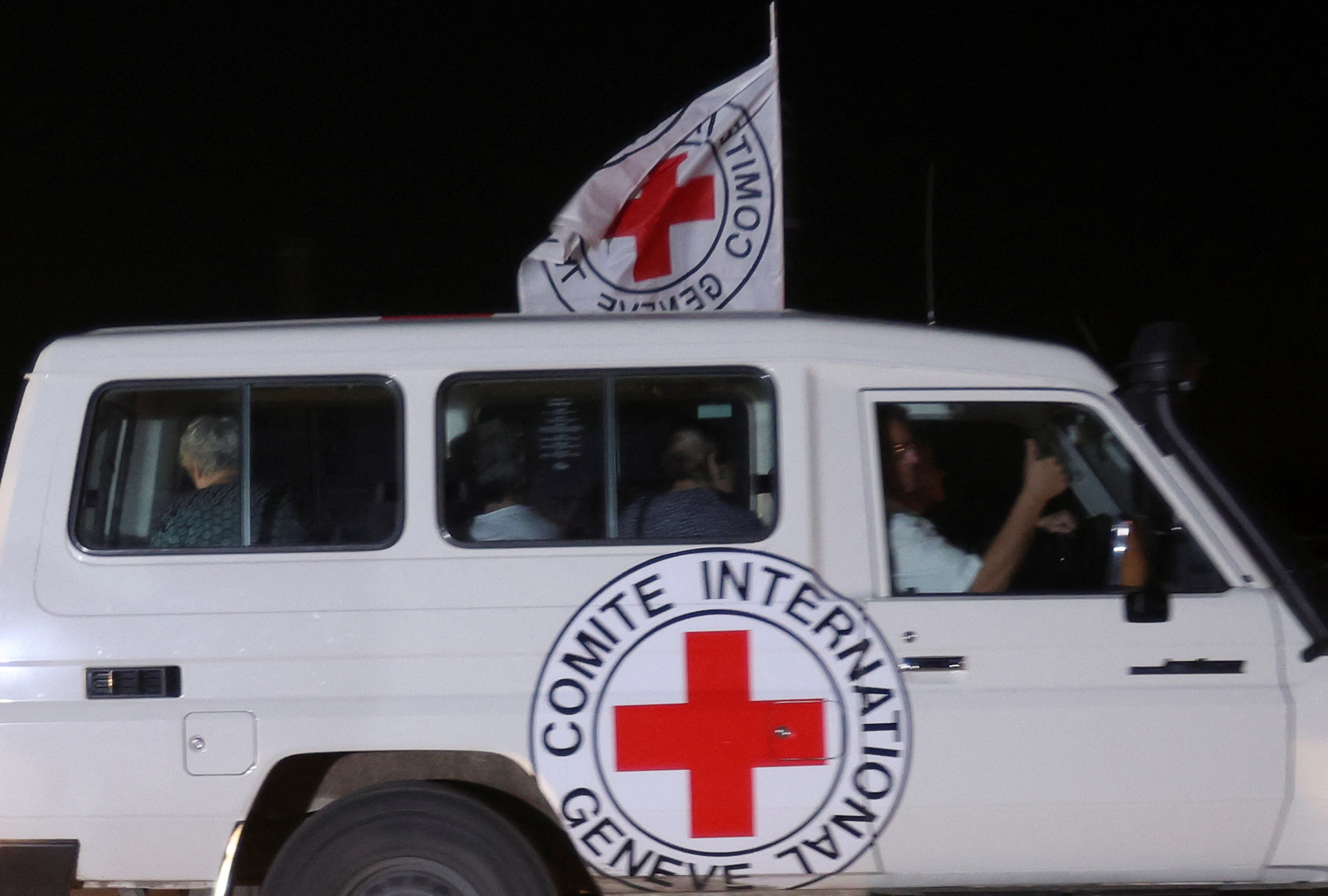The four-day pause between Israel and Hamas offers hope of long-term peace
Editorial: A permanent ceasefire, politically and logically, needs to be honoured on both sides. It cannot be one-way

The four-day pause in the fighting in Gaza comes as a relief to the helpless refugee population of Gaza, perhaps 1 million souls.
The sufferings of the Palestinians in the Gaza Strip, no less than the atrocities perpetrated by Hamas on 7 October, have appalled people everywhere. This unspeakable violence cannot end, for good, soon enough.
It is thanks to intense international pressure (especially from the United States), tireless, exemplary diplomacy by Qatar and the efforts of the International Committee of the Red Cross that this easement in the pain has been achieved.
It gives some hope of how a more lasting peace might eventually be navigated – even if it is far from at hand. Indeed, the risk of the conflict spreading to the West Bank and southern Lebanon remains live, albeit reduced. Long experience in the region suggests that this truce will be an unstable one at best.
If the temporary truce, or hudna, does hold, then hundreds of lorries carrying food, fuel, water and medical supplies will supply desperate people, Israeli hostages will be returned, and Palestinian prisoners released. That will all shift the mood, and help the cause of peace – a tiny glimpse of a future settlement.
Now that a way of delivering humanitarian aid without it being stolen by Hamas has been discovered, it may also be that the very worst effects of the war – if and when it resumes – can be mitigated; though the bombings and siege conditions imposed by the Israeli authorities mean that many more innocent lives will be lost. For now, though, the guns are silent.
And then…?
Sadly, the signs are that there will indeed be a return to the fighting, no indefinite ceasefire, and no lasting peace. Ominously, the IDF has dropped flyers over Gaza warning residents who have evacuated to the south not to return to their homes in the north, because the area is still a war zone. As if to add to their misery, Hamas has been telling Gazans to do the opposite, for its own cynical reasons. Despite the pause, there appears to be no real desire for peace by the leaders on either side. They remain set upon mutual destruction.
The Israel-Hamas war is one of those wars that neither side can ever win. While the Israelis can degrade Hamas’s ability to wage terror on innocent, peaceful Israeli citizens – and may at some point capture Hamas commanders and destroy their armoury – no one believes that this can be the end of the threat.
Either a regrouped Hamas will emerge again, or else some other new organisation, perhaps even more ruthless, will take its place. For as long as Hamas has friends in Tehran, and a supply of embittered recruits, it will be a going concern.
That is all the more likely the longer the pain of the youthful population of Gaza continues, and the more personal and family grievances are added to the longstanding political ones.
Benjamin Netanyahu himself has conceded flaws in the way the war has been conducted. It remains the case that Israel has a right to defend itself – but only within the limits of international law and in a proportionate fashion. The further the IDF strays from that policy, the more the international community will withdraw its support from Israel. Mr Netanyahu’s government has never been given unconditional support for its efforts to provide security for his people.
Nor can Hamas win, however, in the sense of driving Israel out of existence; yet it shows no signs of accepting that fact and its implications: endless conflict. If Hamas wishes for a ceasefire – and there is no explicit evidence the military leadership seek one – it is not likely to be accompanied by any guarantees that there won’t be another 7 October type of attack someday.
It bears repeating: a permanent ceasefire, politically and logically, needs to be honoured on both sides. It can’t be one-way. That is why it is so difficult to bring about.
What can be said is that this truce serves to bring much-needed humanitarian assistance – but also gives pause for all sides to think about the future.
For Israelis, these will be turbulent, emotional days; reviving memories still raw and dominated by the return of people psychologically traumatised by the terror and abduction of the past six weeks. They are already considering the failure of Mr Netanyahu’s government to protect them; and the absence of any exit strategy from Gaza, let alone a plan to “win the peace” once the IDF does withdraw.
The security of the state of Israel, in the long term, has not been enhanced by this war. Mr Netanyahu may not last in power for long once the hostilities do end.
The people of Gaza, also traumatised, have still more pressing questions about survival before them. Yet they must also consider the terrible misfortunes that Hamas rule has visited upon them. They would not today be hungry and thirsty, or grieving for loved ones and seeing their homes reduced to rubble, had Hamas terrorists not attacked Israel on 7 October.
That fact cannot make it easier for Hamas to retain its grip on power: change in Gaza is also possible. None of that means a political solution is immediately in play – still less a two-state treaty – but if recent weeks have proved anything, it is that there is no such thing as a military solution.






Join our commenting forum
Join thought-provoking conversations, follow other Independent readers and see their replies
Comments